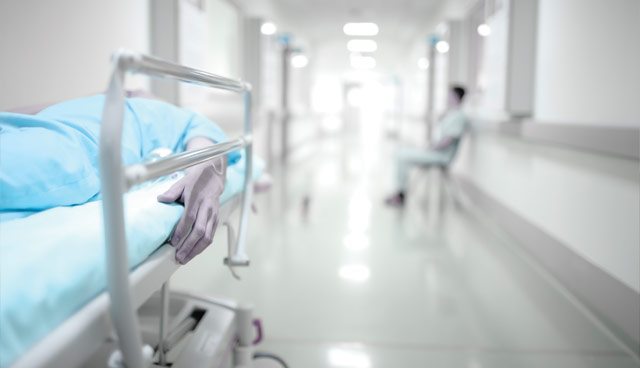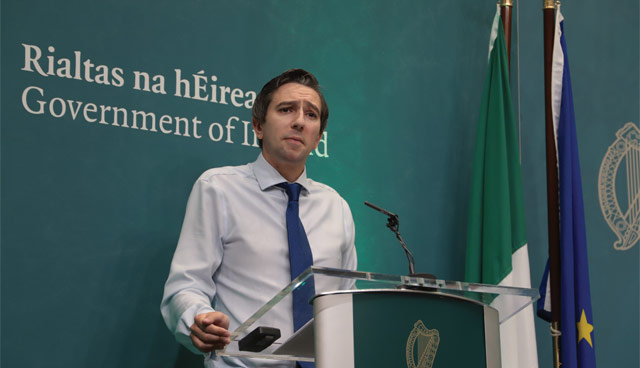Origins of the trolley crisis


Eoin O’Brien, Adjunct Professor of Molecular Pharmacology at the Conway Institute, UCD, delineates the origins of Ireland’s trolley crisis.
Most of my professional life, which spans some 40 years, has been spent in the hospital service. This experience has allowed me to witness a paradox that is affecting how our healthcare system is functioning, or, should I say, failing to function. In my specialty of cardiology, I have seen the disappearance of devastating diseases, such as rheumatic fever, the improvement in survival of patients with heart attack treated in coronary care units, and the benefits of coronary artery stenting and valve replacement without open-heart surgery, to say nothing of cardiac transplantation. All these procedures were unthinkable when I began walking the wards as a young doctor in the 1960s.
And yet, the delivery and provision of these remarkable advances to patients have been overshadowed and bedevilled by the ‘trolley debacle’ of the emergency departments (EDs), which has denied patients the dignity of proper care in their time of illness, and medical staff the necessary environment to give appropriate care and treatment to sick people.
Otherwise excellent
All in all, this blight has diverted attention from the otherwise excellent medicine being delivered to patients throughout Ireland. This crisis has been wrought on patients and the frontline nurses, doctors and paramedical staff, by an incompetent administration. Indeed, although doctors are frequently made the scapegoats for the deficiencies of an inefficiently administered healthcare system, the blame for the ED crisis should not be foisted on the medical personnel who have fought stoically for many years to provide a service under atrocious conditions. And, it should be remembered that it is the admitting consultant who bears the responsibility, not only of providing adequate care, but also the medico-legal consequences arising from what may later be considered inappropriate treatment.
Successive Ministers for Health, managers of the Health Service Executive, and CEOs of hospitals the length and breadth of the country, all trot out the same vapidities year after year – “unacceptable” – being a popular mantra; and a tolerant public are appeased until the next predictable annual crisis. So, what can I add to the many thousands of words written and spoken in the media on this ‘trolley debacle’? Firstly, I can identify how and when it all began, and perhaps more worryingly, I can anticipate a very undesirable, and possibly long-lasting deleterious effect on the practice of good medicine.

“This essence of good medicine, this ability that makes a nurse or doctor ‘good’, is under threat from the ‘trolley debacle’.”
Then and now
Let me portray life in an ED of a busy hospital for the 20 or so years that preceded the ‘beds blitz’ of the late 1980s. Patients were brought in by ambulance or arrived of their own volition as they do today, and were triaged by the sister-in-charge to an appropriate area of the ED, as is done today. However, the difference between then and now was that those patients needing detailed assessment were placed on couches in curtained cubicles where they were seen in privacy by a doctor, who then referred them onwards for investigation en route to a ward bed if indicated. Once there the patient was assessed further by the admitting team, and a process that entailed ascertaining the effect of the illness or accident on the patient, the past, family and social history, together with the findings from examination, culminated in a diagnosis with an investigational and treatment strategy. There were no trolleys in corridors and the administration of care and treatment was dignified for the patient and, if demanding at times for doctors working long hours, followed a pattern of well-established practice.
I suspect that this utopian idyll is so far from the reality of today that it could readily be dismissed by staff in EDs as the stuff of dreams.
But why, we must ask, did this state of relatively good practice suddenly change?
Wanton dismantling
In the late 1980s, Rory O’Hanlon, the then Minister for Health acting at the behest of his Taoiseach, Charles Haughey, set about re-organising the voluntary hospital service that had been in existence for 250 years. Hospitals were certainly in need of reform, but reform is one thing, wanton dismantling, without due consideration of the consequences, is a different matter. In Dublin, the Charitable Infirmary on Jervis Street, the Richmond, Whitworth and Hardwicke Hospitals, the Adelaide, Meath, Sir Patrick Dun’s and Mercer’s hospitals were all closed, and other smaller hospitals, such as the City of Dublin Skin and Cancer Hospital on Hume street and Monkstown Hospital, would later follow suit, further depleting the bed pool.

Although no one would deny that the merging of many of these hospitals into new hospital complexes was necessary, the net bed loss from such indiscriminate action was never calculated. For example, Beaumont Hospital, which in Haughey’s mind was to be Ireland’s state-of-the-art hospital with some 600 beds to cater for the patients who formerly attended Jervis Street Hospital and the Richmond, Whitworth and Hardwicke Hospitals, opened in 1987 with a mere 300 beds, and the complement of beds of the former hospitals was never restored.
Grim reality
Indeed, the serious underfunding of the Irish healthcare system over many years has been highlighted recently by two commentators. Julien Mercille has shown that during two periods of austerity in the 1980s and in the years after the 2008 financial crisis, inpatient beds dropped from 15,111 to 10,473 in public hospitals.1 Writing recently in The Lancet, Brian Turner questioned An Taoiseach Leo Varadkar’s oxymoronic reasoning which concluded that because Ireland spends the fifth highest amount on health in the world, its citizens should, therefore, expect the fifth best health system in the world. This simplistic assumption ignores the fact that Ireland must first catch up with decades of underfunding, the most obvious (but by no means only) effect of which has been the current bed shortage. “During the late 1980s and early 1990s, severe cutbacks in health expenditure led to the closure of thousands of hospital beds, with the number of beds per 1,000 people now substantially below the OECD average (3 versus 4.7 in 2015).”2
These realities seem at last to be dawning on Simon Harris, the Minister for Health, and those responsible for the overseeing the health-care system, namely that one of the essential elements in solving the current crisis is the restoration of beds across the hospital service. However, more beds cannot be provided without additional doctors and nurses to staff them, and where will these come from? Besides, the provision of beds is not the only aspect of the health service in need of adjustment.
General practice no longer provides the supportive care that was once available, and patients often have no option but to resort to their local hospital. Innovative ways in which beds might be restored should take advantage of new directions in illness management, such as early mobilisation and rehabilitation, and the performance of day case procedures that previously necessitated hospital admission.
Attention needs also to be directed towards alternative ways of providing care so that the hospitals, imperfect though they may be, are not depended upon as the sole source of expertise and care.
But what of the longer-term effects of the ‘trolley debacle’? I am concerned that the necessary response of medical personnel to the modus operandi that has of necessity developed to cope with having to treat patients in corridors, bodes ill for the future good practice of medicine. Patients are sick people in need of appropriate treatment. But there is more to good medicine than merely providing treatment.
Whereas doctors and nurses can recognise the features that are common to various illnesses, they must also be given the opportunity to identify something far more complex, and that is that individual patients respond differently to a specific illness. This interaction of a patient with an illness, or calamity, can only be gleaned if a doctor or nurse has the time and the appropriate surroundings (a cubicle) to sit down and determine an individual patient’s reaction to his or her illness.
This essence of good medicine, this ability that makes a nurse or doctor ‘good’, is under threat from the ‘trolley debacle’. Will the doctors and nurses who have been forced to practice under the deplorable conditions that have now been part of ED practice for the past two decades have lost the precious qualities that are necessary to treat ill people? By having been exposed to a new and undesirable culture of practice for so long, will doctors and nurses be able to return to the status quo of former generations? Only time will tell if this inauspicious consequence of the current ED crisis is a lasting one.
First published in the Irish Medical Times, 23 March 2018
1. Julien Mercille, Privatization in the Irish hospital sector since 1980. J Pub Health, 2018. Published on-line: https://doi.org/10.1093/pubmed/fdy027
2. Turner B. Putting Ireland’s health spending into perspective. Lancet 2018;391:833-4.





